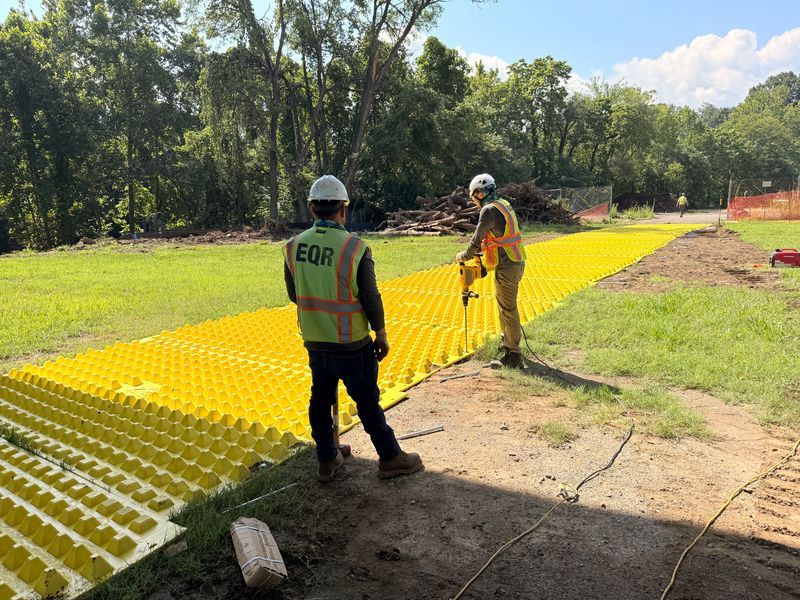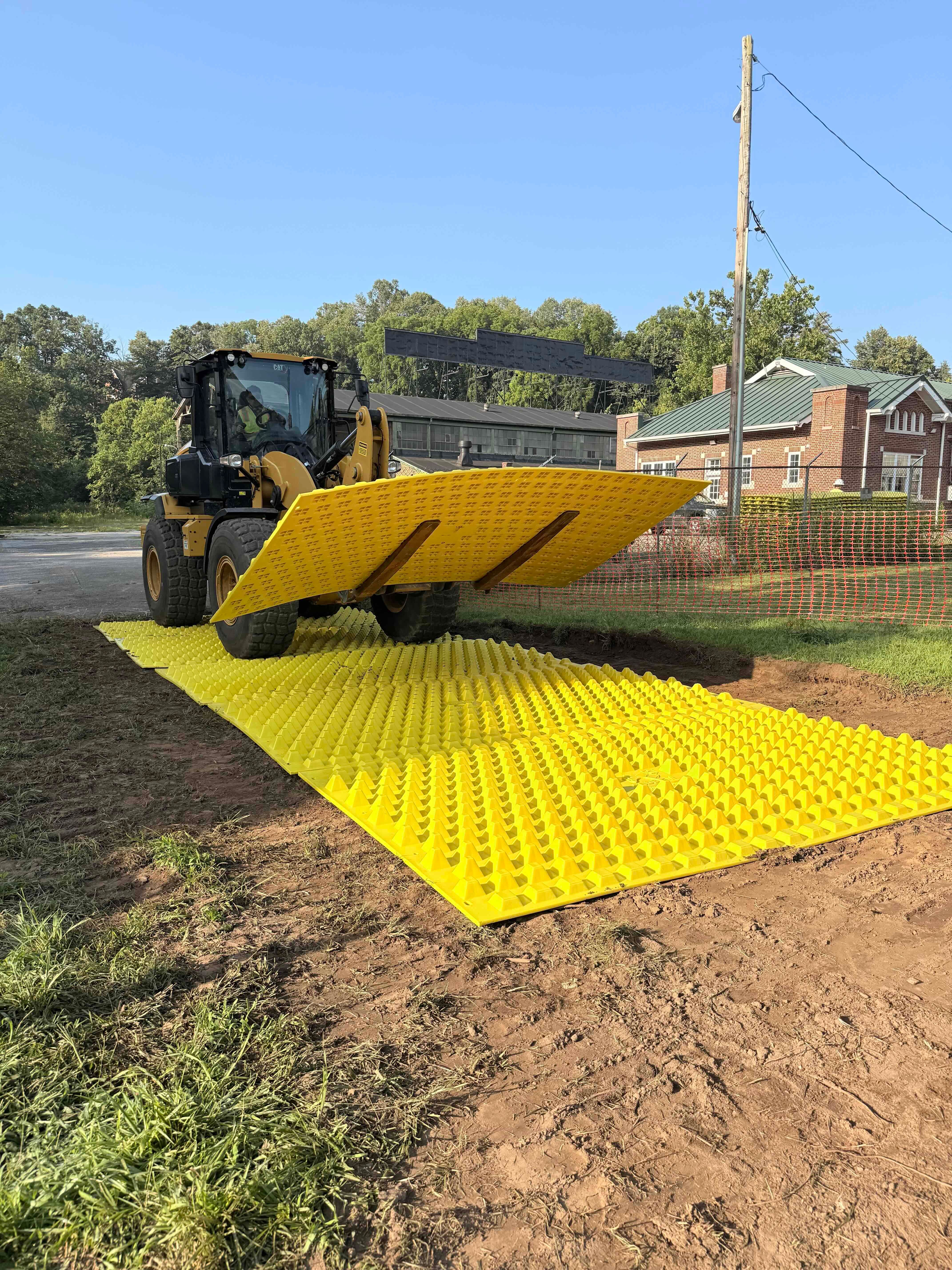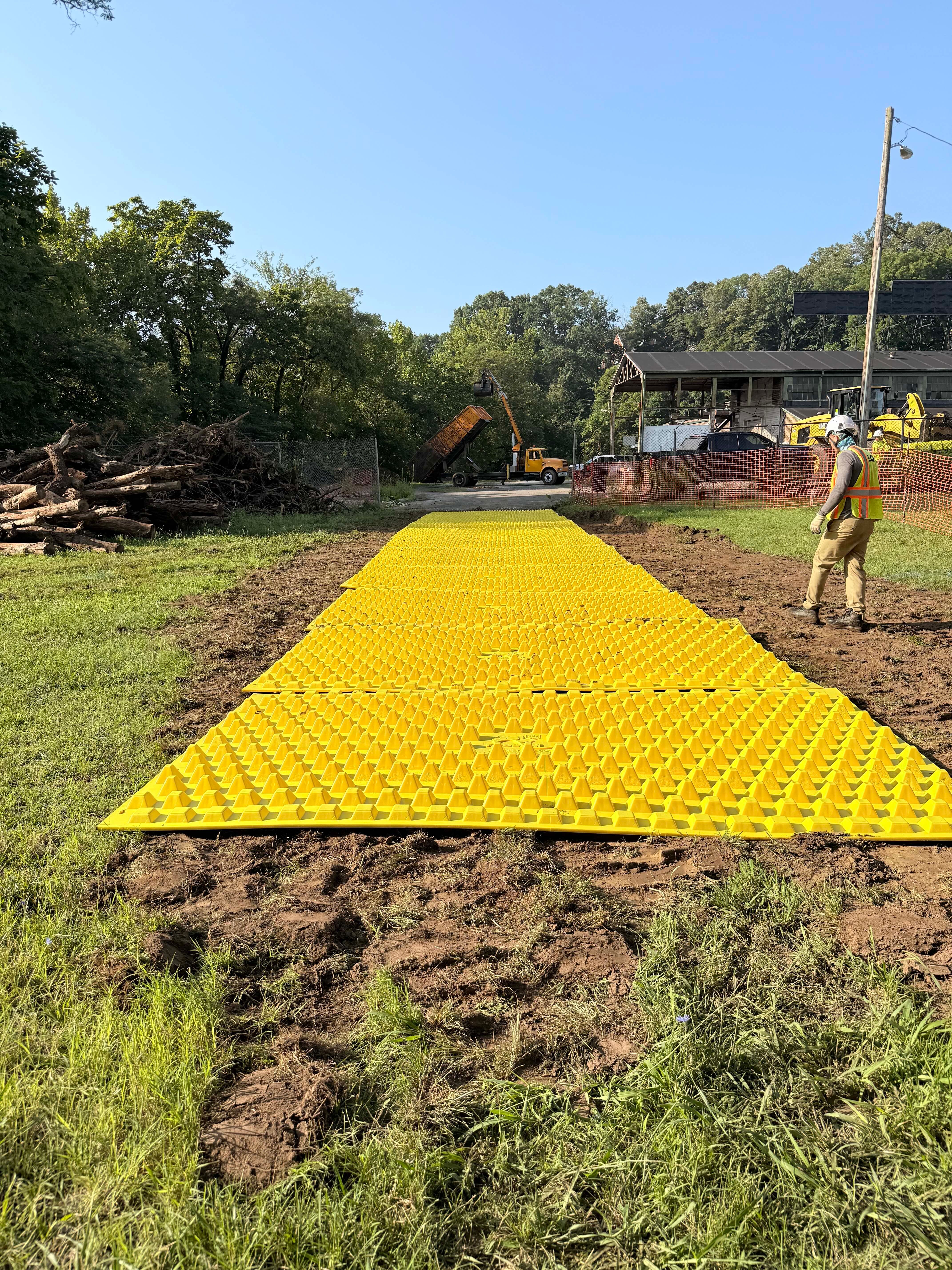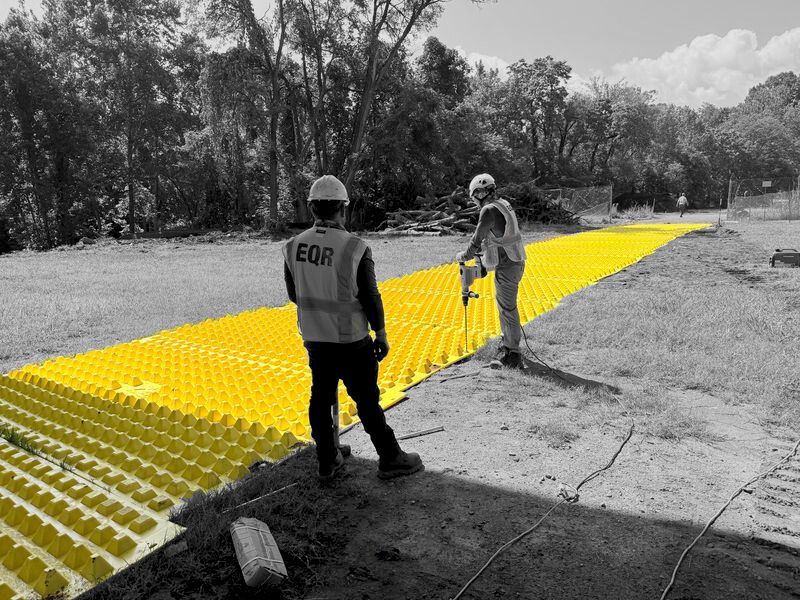Project Overview
Along the Roanoke River Blueway, a high-value recreational and ecological corridor in southwest Virginia, Environmental Quality Resources (EQR) has undertaken a series of restoration projects aimed at stabilizing streambanks, improving habitat, and enhancing long-term water quality. The work spans multiple access points along the river, where EQR crews are reconstructing degraded sections of shoreline and restoring natural hydrology in an area widely used for kayaking, fishing, and public recreation. The effort is part of a larger investment by the City of Roanoke to enhance river access, promote recreation, and foster the long-term health of the Blueway. The project is designed to improve both ecological function and community access, ensuring that the river remains a safe and enjoyable resource for residents.

As one of the Mid-Atlantic's leading ecological restoration contractors, EQR has extensive experience managing sensitive waterways. The Roanoke project called for careful coordination. EQR had to meet strict environmental requirements while still navigating through tight, sensitive areas along the river with heavy equipment. Every step of the work needed to protect the landscape, but the team also had to keep the project moving. Finding that balance between environmental stewardship and practical construction access was central from the start.
The restoration is organized into five individual sites along the river, beginning with Site A, which is expected to take about three months to finish. EQR is approaching each location one at a time. This phased approach helps limit disruption, keeps the work zones manageable, and allows the public to continue accessing the Blueway safely. The project will ultimately create a river experience similar to the adjacent Roanoke River Greenway, but within the water itself, giving residents new ways to engage with the Blueway. Each location features carefully engineered in-stream features that guide flow, strengthen shoreline stability, and enhance recreation while protecting aquatic habitats.
Environmental & Site Context
The Roanoke River Blueway is a 45-mile stretch of water that winds through neighborhoods, parks, and natural areas, making it one of the region's most active outdoor recreation spaces. Families kayak here, people fish along the shoreline, and residents use the trail system daily. Because the river supports both community use and a sensitive aquatic ecosystem, any restoration work along this corridor has to be carried out with care. Protecting water quality, limiting sediment disturbance, and maintaining public access were essential from the start.
The project area consists of silt loam and clay soils that retain water easily and soften quickly. Moving equipment across saturated ground increases the potential for erosion and sediment migration. Seasonal storms and changing river levels made conditions even more unpredictable. EQR required a sediment control approach that would remain effective despite repeated rain events and heavy construction traffic. Meeting the Virginia Department of Environmental Quality's Virginia Stormwater Management Program requirements guided the team's planning and execution of every phase of the restoration.
Hydraulic modeling for the project showed that the new in-stream features will slow the water in certain areas of the channel. These calmer pockets, often called slack-water zones or eddies, create important resting habitat for juvenile fish such as the Roanoke logperch. Adding these features into the design helps support a healthier mix of aquatic life and strengthens the river’s long-term ecological resilience.
Access and Compliance Challenges
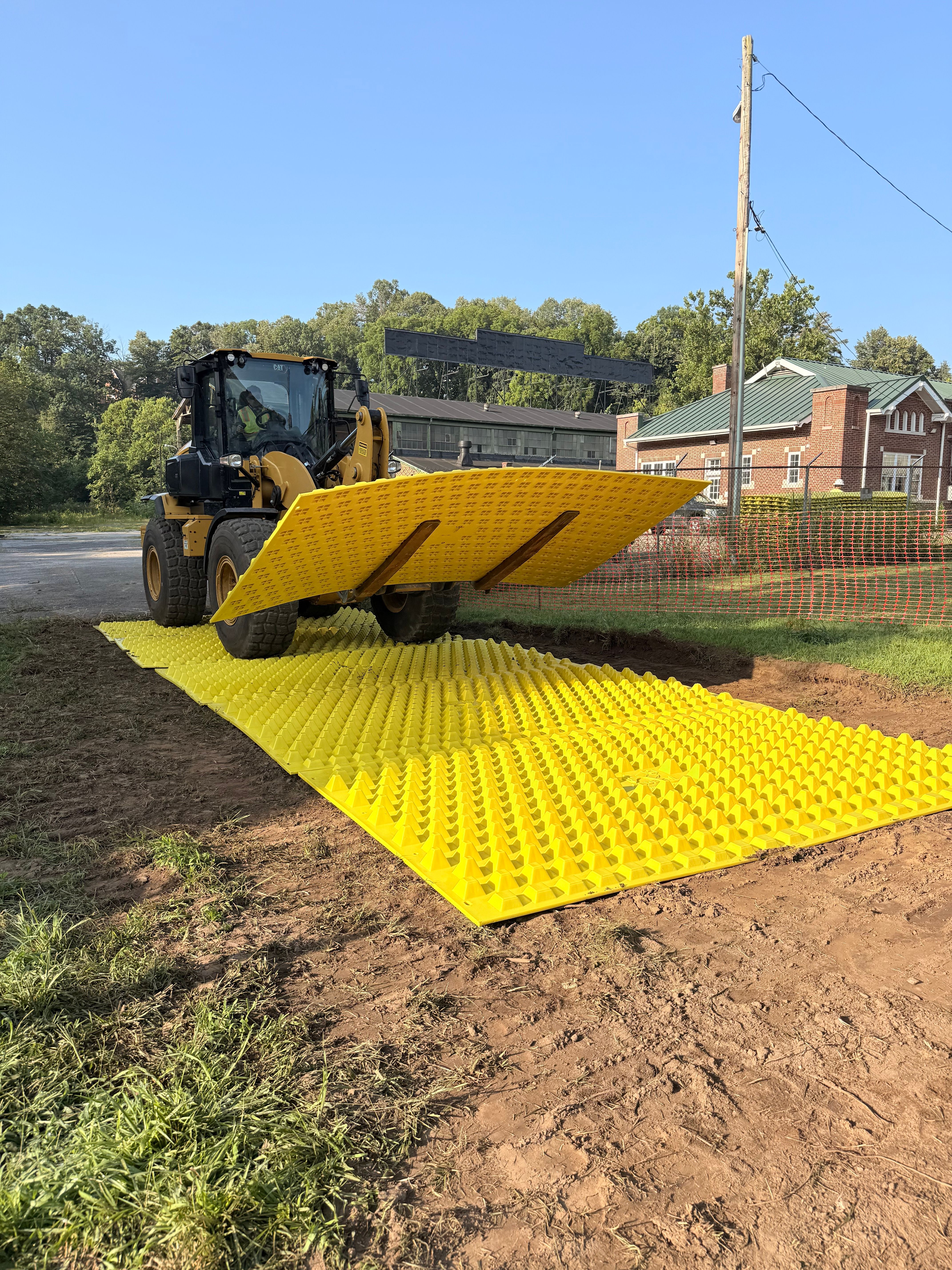
Because the restoration work stretches along a narrow corridor with limited staging areas, EQR needed to move dump trucks, excavators, and tracked equipment through multiple entry points along the river. Traditional stone construction entrances became difficult to maintain in these conditions. Frequent rainfall and saturated soils caused stone pads to wash out or compact, requiring repeated regrading and replacement. These issues increased labor demands, added material costs, and introduced potential compliance risks, especially in a publicly accessible corridor where sediment reaching roads or trails would be highly visible.
Maintaining stable access in high-moisture soils while minimizing environmental disturbance was a key priority. The team also sought to reduce hauling requirements, avoid excess material waste, and keep daily maintenance manageable so the project schedule could remain on track. At the same time, EQR was responsible for meeting Virginia DEQ's strict erosion and sediment control expectations for work occurring adjacent to active waterways.
With environmental protection central to the project and public visibility high, EQR required a more reliable, lower-impact access solution that would perform consistently as conditions along the Roanoke River Blueway changed.
Implementing Manufactured Trackout Control
To meet VSMP requirements and maintain stable access throughout the project's shifting phases, EQR integrated manufactured trackout control devices to supplement traditional erosion and sediment control measures. Among these tools, the team deployed FODS Trackout Control Mats at key access points where stone was not performing effectively.
Because the mats can be installed with minimal equipment, EQR is able to reposition them as work continues along the river corridor. Their raised-pyramid design removes sediment from vehicle tires before the vehicles reach paved public roads or the Blueway trail system. This reduces the need for street sweeping and lowers impacts on heavily used community spaces.
Because the project is structured around five distinct sites that will be completed one at a time, starting at Site A and progressing downstream, EQR will need to shift construction access points as each phase wraps up. This sequencing makes a reusable system especially valuable. The FODS mats can be installed quickly at the first site and then picked up and redeployed as the team advances from one site to the next. Their ability to be relocated with minimal equipment will help EQR maintain consistent access control throughout the project without the delays, material waste, or repeated rebuilding that come with stone entrances.
The system also supported other ESC components, including sediment traps, turbidity controls, and stabilized work surfaces, which helped the project maintain full compliance throughout variable weather conditions.

Field Performance & Contractor Insights
The manufactured system proved especially valuable during high-moisture periods and after river rise events, when stone pads required more frequent refreshing. The mats withstood repeated passes from heavy dump trucks and tracked equipment
EQR Project Superintendent Taylor McFadden shared his firsthand experience:
"Utilizing FODS track-out mats on two different job sites for the first time has changed the way I view construction entrances. Coming from a background of stone construction entrances, FODS has granted us extra utility in quickly installing and removing entrances, reduced cleanup, and easier maintenance. The durability of FODS is impressive and holds up well to dump truck and heavy equipment traffic... This eliminates the trucking and hauling aspect of the equation and can be accomplished with on-site personnel."
His experience highlights how the mats help EQR maintain reliable, low-maintenance access as site conditions change.
Outcomes & Environmental Impact
Across both Roanoke sites, the combination of EQR's restoration expertise, thorough erosion and sediment control practices, and the use of manufactured trackout solutions resulted in clear improvements. Sediment tracking onto nearby roads and trail systems decreased noticeably, creating cleaner and safer conditions for construction crews and community members who use the Blueway daily. The job sites stayed tidier overall as well. Fewer material deliveries were needed, and the team spent far less time managing or replacing traditional stone entrances, which often break down in wet conditions.
This approach helped reduce the project's long-term environmental footprint and ensured that access points remained functional during storms, high-moisture periods, and natural shifts in the river. Being able to set up and move entrances quickly also improved job site efficiency, allowing the team to maintain momentum as the work progressed along the corridor. For the Roanoke River Blueway, a local landmark known for its recreation and natural beauty, these improvements help protect long-term water quality and strengthen the river's ability to support a healthy, resilient ecosystem.
